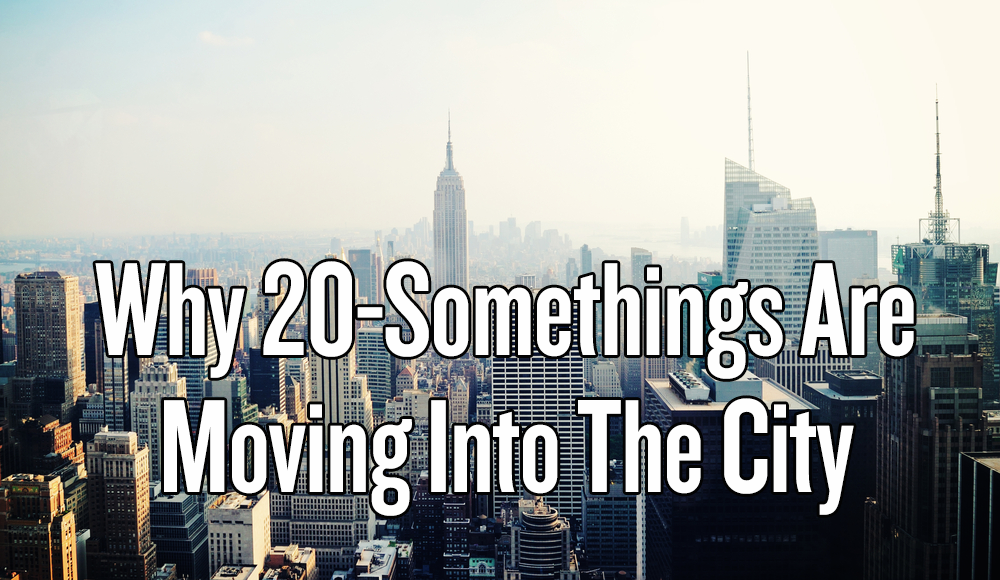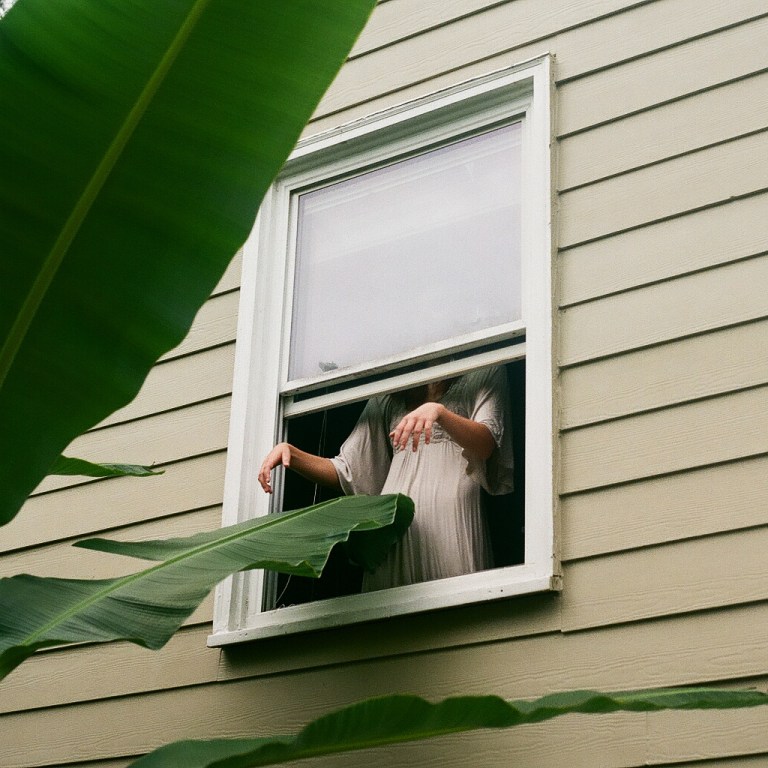The Fall And Rise Of Cities: Why 20-Somethings Are Moving Into Urban Areas
If you're a 20-something in the United States, chances are, you're reading this in a city.
By ![]() Michael Koh
Michael Koh

If you’re a 20-something in the United States, chances are, you’re reading this in a city. (If you’re not, you have plans to move into a city.)
It’s been reported that an overwhelming number of college graduates are packing their bags to leave their suburban home for an apartment in the city. Why is that?
Is it the boredom that comes with living in the suburbs? Are 20-somethings fed up with living with their parents? Is it the quality of life at home?
Well, to really answer that, we first need to understand how suburbs came to be.

Post World War II, you saw the decline of heavy industry. Cities — especially the Rust Belt cities, saw significant decline in population. Left with unemployment, citizens sought work elsewhere, and left Detroit, Cleveland, Buffalo, Flint, Johnstown, Pittsburgh, Augusta, and so on, in droves. Francis Fukuyama called this The Great Disruption.
People associate the information age with the advent of the Internet, in the 1990s, but the shift from the industrial era started more than a generation earlier, with the deindustrialization of the Rust Belt in the United States and comparable movements away from manufacturing in other industrialized countries…The decline is readily measurable in statistics on crime, fatherless children, broken trust, reduced opportunities for and outcomes from education, and the like. – Francis Fukuyama, The Great Disruption
In other words, the current stage of the Information Age was set in the 50s and 60s by the decline of heavy industry and the replacement of it with a service industry. However, this transition did a tremendous disservice to the quality of life in urban areas. Crime shot up, buildings deteriorated, public housing became a breeding ground for drugs and gangs, graffiti became common on walls of buildings — this added to people fleeing for the suburbs, where they believed was safer, far more stable, and away from the crime that plagued cities.
[youtube http://www.youtube.com/watch?v=RhRUMDWDIa4&w=584&h=390%5D
According to Kenneth T. Jackson, Newark went from 439,000 residents in 1950 to 272,000 in 2000. Buffalo saw its population drop from 585,000 to 292,000. Detroit went from 1,850,000 to 951,000. New York City’s population declined by “almost a million persons” from 1950 to 1975. This saw NYC’s public school system fall into a disorganized mess, parks into disrepair, and its fabled transportation system lost half of its ridership. Jackson explains that “the human exodus was fueled by a sharp decline in industrial deployment,” which is what Fukuyama asserts above. Jackson also mentions that companies escaped the dredge of cities and into suburbs themselves, most opting to go down South into the Sun Belt.

The rise of suburbia (and I suppose, suburban sprawl), can be attributed to the factors above, but — as written by Andres Duany — also due to the “direct result of a number of policies that conspired powerfully to encourage urban dispersal.” (Suburban Nation: The Rise of Sprawl and the Decline of the American Dream) What Duany is referring to are the Federal Housing Administration and the Veteran Administration loan programs aimed at providing low mortages to WWII veterans looking for housing, especially in the single-family suburban sector. This in turn greatly affected urban housing, which was neglected for “greener pastures,” or in this case, a green lawn. Duany writes, “These mortgages…typically cost less per month than paying rent…” and so, logistically, financially, rationally, it sounded reasonable and the best option for families to move into suburbs.
With people moving out of the city, shopkeepers had no choice but to move with their customers to the suburbs. However, commercial zones weren’t — and still aren’t available in residential neighborhoods, which gave rise to strip malls — a section of land dedicated for commercial use, usually only reachable by car. Duany calls this segregation — not in the racial sense of the word, but as the conscious decision to separate residential from commercial, commercial from industrial, and industrial from residential. This, Duany writes:
…became the foundation of a new profession,” because it dramatically changed the landscape of London, Paris, Barcelona, and etc, in Europe. “City planners wisely advocated the separation of factories from residential areas, with dramatic results. [Cities] virtually unfit for human habitation were transformed within decades into national treasures. Life expectancies rose significantly, and the planners, fairly enough, were hailed as heroes. (Suburban Nation: The Rise of Sprawl and the Decline of the American Dream)
He explains that American city planners’ emulation of this successful procedure is applied to everything, and not reserved for only compatible cases. In fact, Duany calls the new American cities “unmade omelets,” where the ingredients are kept separate from each other and “eventually consumed in turn, raw.” It ultimately reduced suburbia into quantity and categories. To Duany, the suburbs feel like “an uncoordinated agglomeration of standardized single-use zones with little pedestrian life and even less civic identification, connected only by an overtaxed network of roadways.” (Don’t most of us feel bored when we go back to the suburbs visit family?) Perhaps an overly eloquent way of putting how modern 20-somethings feel about living in the suburbs today.

In April, Joseph Berger of The New York Times wrote an article which expressed concern from suburban local governments on suburban population declines.
Since 2000, Westchester, Nassau and Suffolk have experienced a drop in the number of 25- to 44-year-olds, with the declines particularly sharp in more affluent communities. Between 2000 and 2011, Rye, for example, had a 63 percent decrease in 25- to 34-year-old residents and a 16 percent decrease in 35- to 44-year-olds.
New York suburbs are not the only ones getting somewhat grayer. In three Maryland suburbs outside Washington, Chevy Chase lost 34 percent of its 25- to 34-year-olds, Bethesda 19.2 percent and Potomac 27 percent. The declines were comparable for Kenilworth, Winnetka and Glencoe outside Chicago, and Nantucket, Barnstable and Norfolk Counties outside Boston. (NYTimes)
This signifies that the trend is reversing. Cities aren’t hemorrhaging people anymore. Instead, suburbs are. In fact, in the same article, Alexander Roberts, the executive director of Community Housing Innovations “attributes the population declines in Westchester and on Long Island to the increasing cost of houses and the resistance by localities to building apartment buildings with modest rentals.” Critics may point out the exorbitant rental prices of Williamsburg, or Greenwich Village, and that rent has been surging upwards with no ceiling in sight, but Roberts explains that cities provide allure, something which suburbs so desperately lack. Cities provide these young men and women an output to explore diverse neighborhoods — all within walking distance, something that they were unable to experience in a suburban setting (and Roberts explained that suburbs with the largest decline in 20-somethings were in “the least diverse communities with the most expensive housing,” which I can only infer as mostly white, upper-class citizens).
[youtube http://www.youtube.com/watch?v=x4o-TeMHys0&w=584&h=390%5D
The same article quotes several former suburbanites, which they claim to have no interest in moving back in the “near future.” One woman explains that living in the city allows her to “do so much without ever leaving her neighborhood,” another reasons the “easy commuting to work, the night life, the cornucopia of things to do,” as not moving back, and both seem to agree that they embrace the diversity of their neighborhoods. She goes on to say that her and her husband are holding off on purchasing a house “as long as possible.” Time released an article later that week claiming that the new American dream is living in a city, not owning a house.
The New York Times article and the Time article both suggest that 20-somethings are putting off moving back into the suburbs because they have a harder time finding full-time employment or simply lack confidence that their employment is stable enough to warrant purchasing a home.
According to Time:
Census data released last month show that metropolitan areas across the country grew at a faster rate last year than the rest of the country, with cities like Austin, Texas and Seattle, Washington growing especially swiftly. Metro areas grew faster than the U.S. as a whole between 2012 and 2013 (0.9 percent compared with 0.7 percent).
Coupled with interest from the 20-something crowd and revitalization projects backed by local governments, the allure of the city is almost undeniable.
Accessible amenities, allure, distance, density, efficiency — these are all criterias 20-somethings look for in a habitable location and that’s exactly what a city offers them. Instead of measuring square feet like their parents and their grandparents, 20-somethings are more interested in stores being in walking distance (or literally under their apartment building), gyms being a short run away, having options for transportation, restaurants, neighborhoods, close proximity to people and parks. It was only a matter of time that people started moving back into cities.
(And also, internet startup companies.) ![]()




